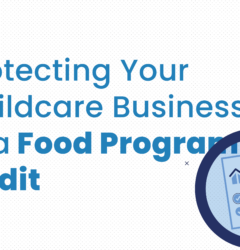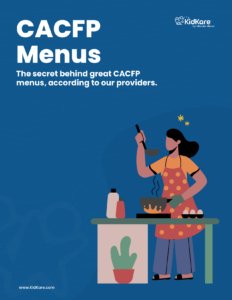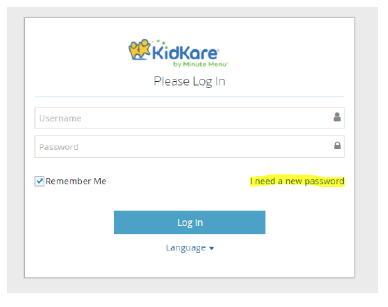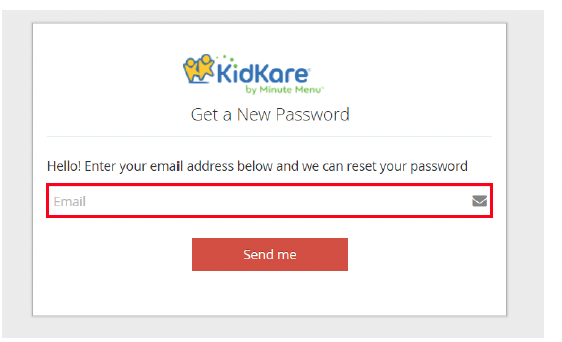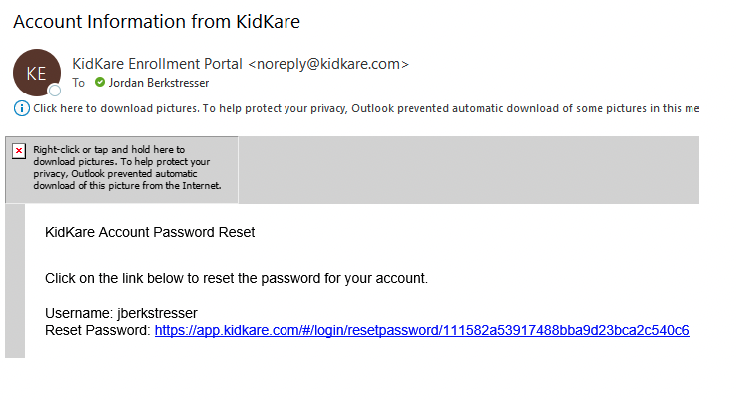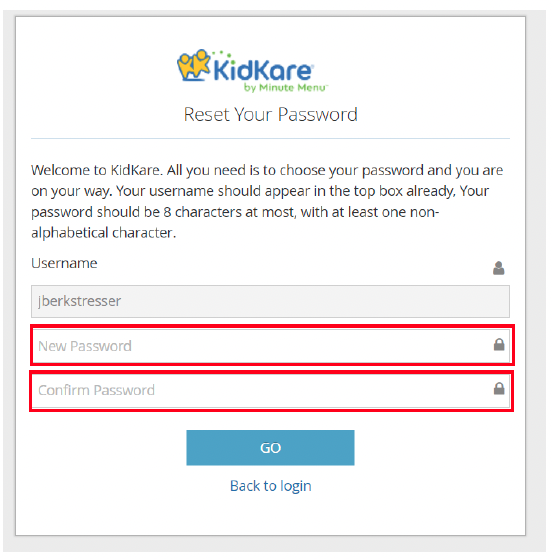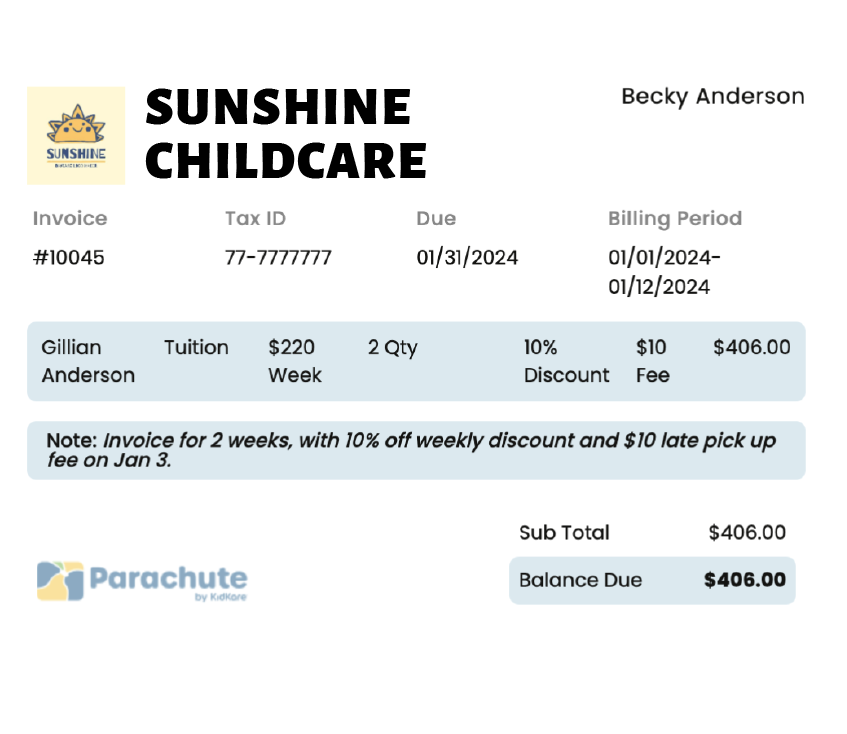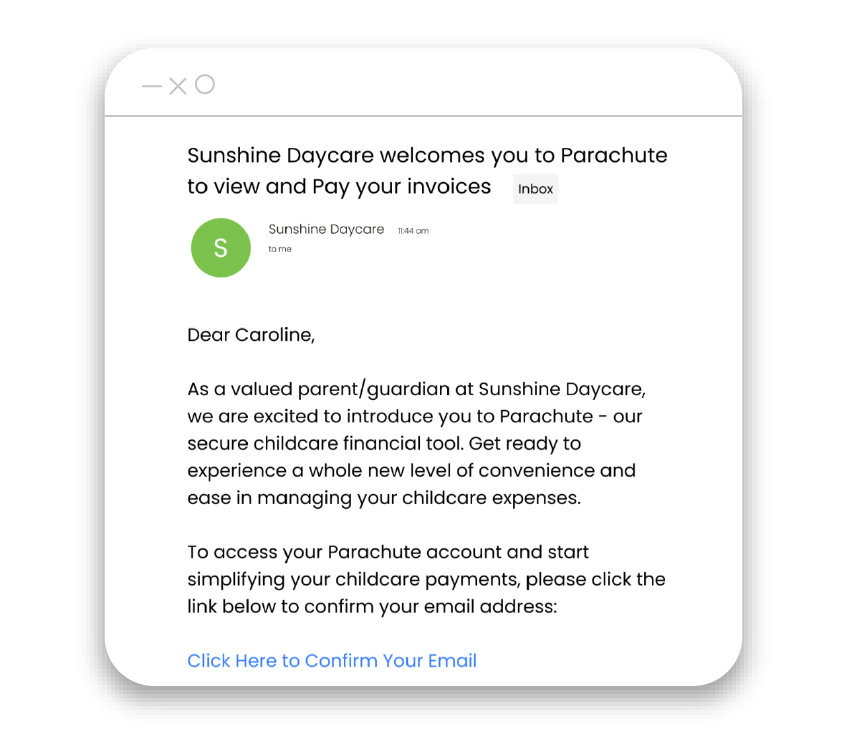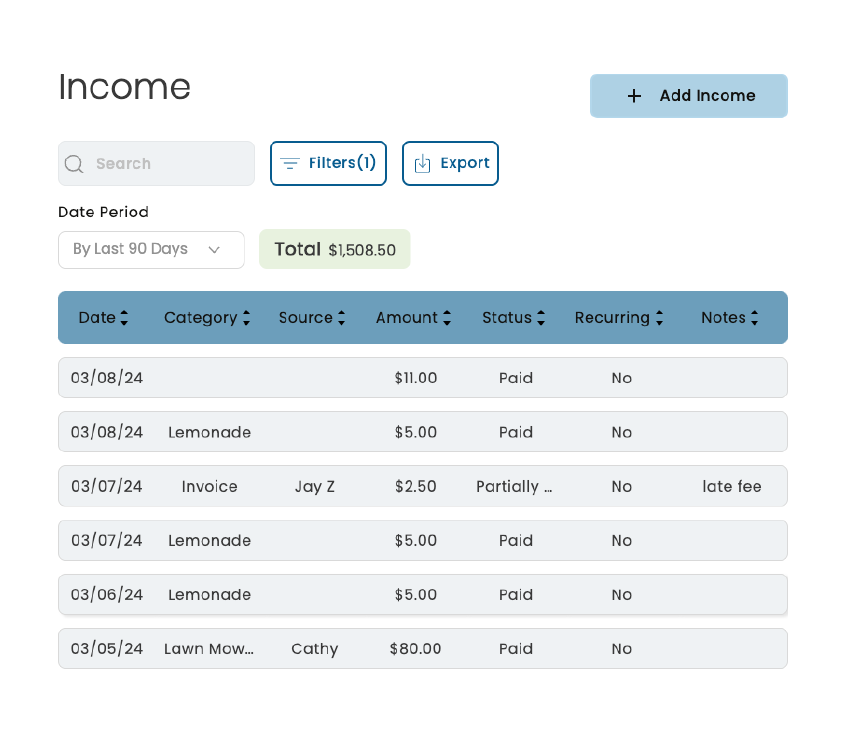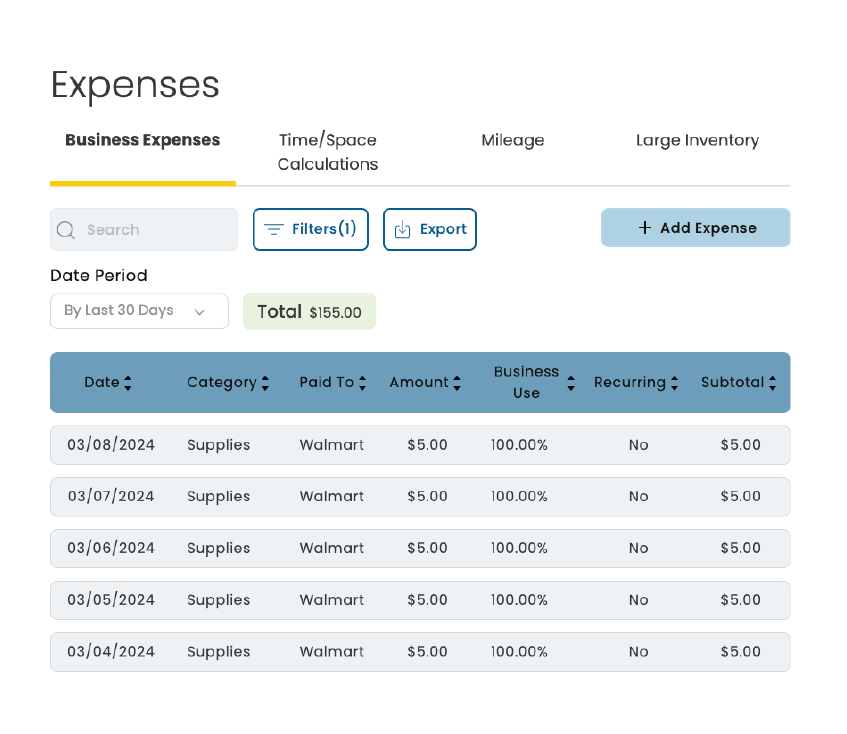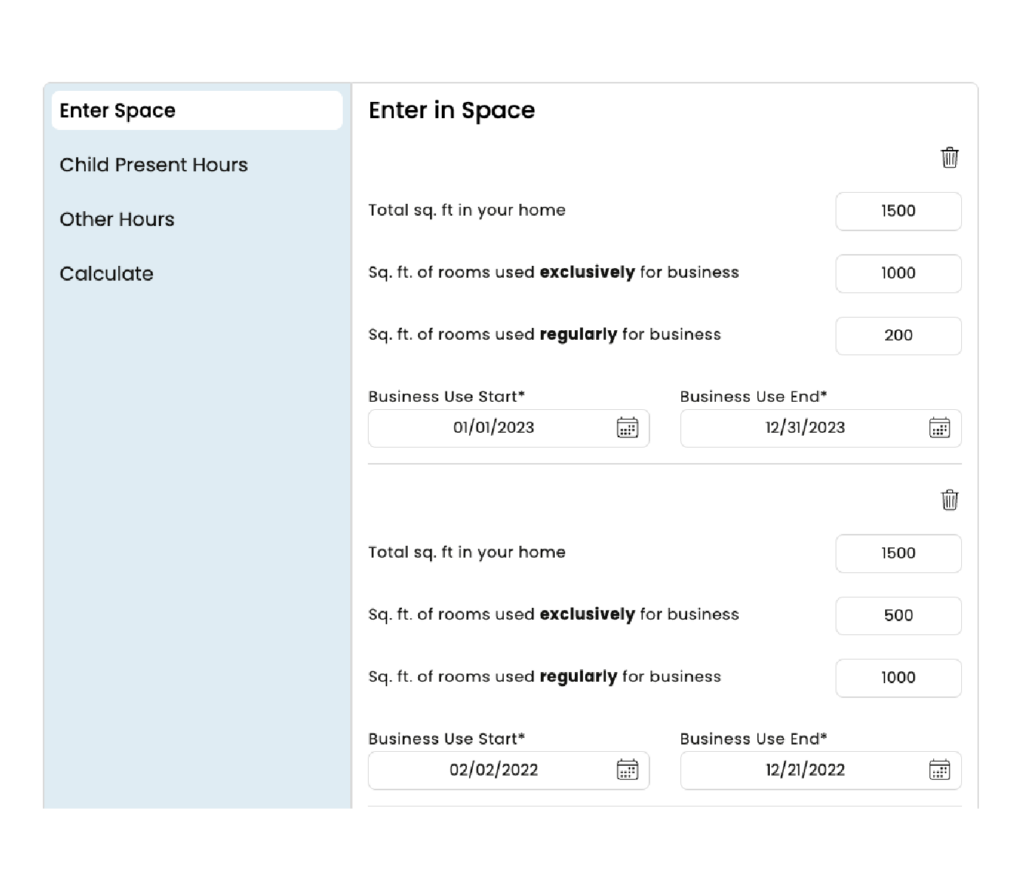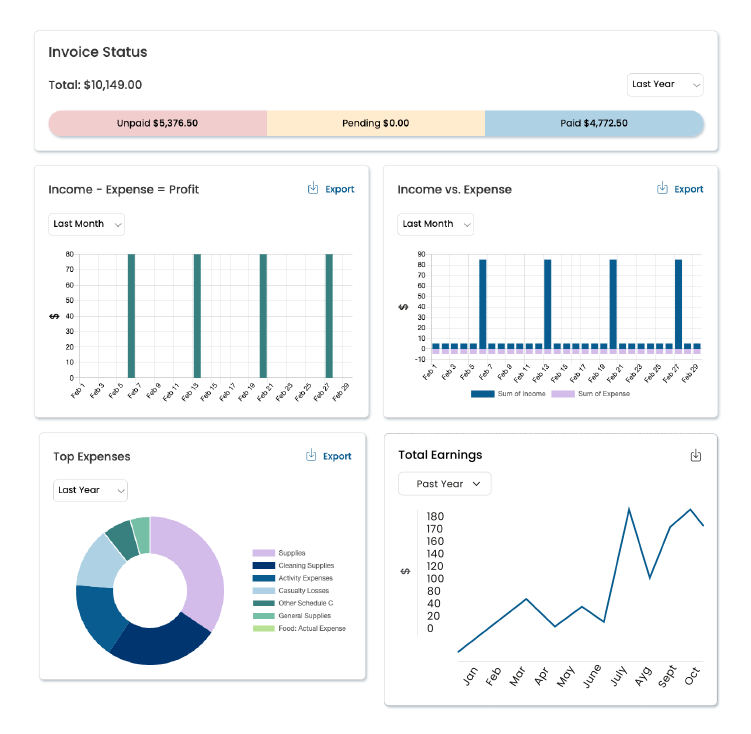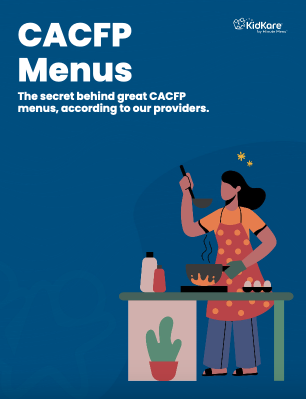
The Child and Adult Care Food Program (CACFP) budget season is approaching, which means it’s time to plan out your Food Program’s expenses. Every year Sponsors and Center-based programs must submit an annual budget. In addition, they should submit revisions to the budget after periodic analysis and before actual changes in the budget are made.
There are two main goals for a CACFP budget:
- Project the amount of revenue in the nonprofit food service.
- Show the allowable cost items and the projected expenses.
The budget includes two types of allowable costs, direct and indirect costs, which are further categorized into Administrative and Operational Costs. Here are some examples of the frequent CACFP expenses:
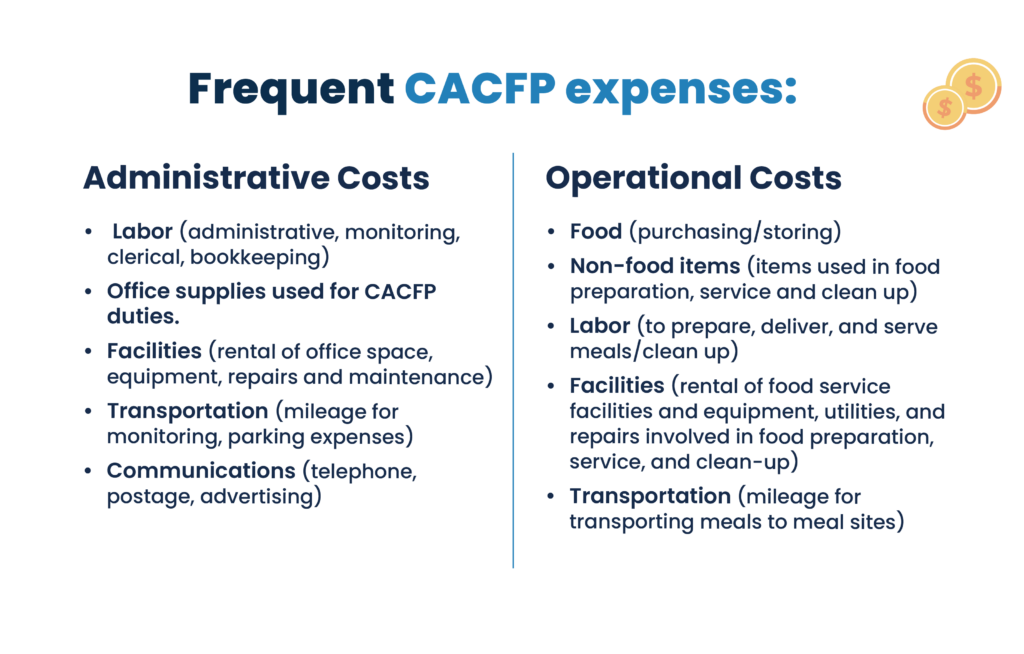
The main difference between direct cost vs indirect cost are:
Direct costs are incurred specifically for a program or other cost objective and can be readily identified as a particular objective, such as food service. On the other hand, indirect costs are typically incurred for the benefit of multiple programs, functions, or other cost objectives and, therefore, cannot be readily or specifically identified with a particular program or other cost objective.
Also, direct costs are easily identified and assigned to the CACFP. However, indirect costs cannot be easily identified or assigned to the CACFP.
Allowable Costs – Direct Cost
Direct costs are costs incurred specifically for a program or other cost objective, and can be readily identified to a particular objective, such as food service.
Example: Food, wages/salaries of staff working solely in the food service.
Allowable Costs – Indirect Cost
Indirect costs are costs typically incurred for the benefit of multiple programs, functions, or other cost objectives, and therefore cannot be readily or specifically identified with a particular program or other cost objective.
Example: Administrative overhead (may include, but not limited to, fringe benefits, accounting, payroll, purchasing, facilities management, utilities).
Only the share of costs that benefit the CACFP can be assigned to the CACFP. If the Sponsors and Center-based programs claim indirect costs, the rate must be part of their cost allocation plan. A cost allocation plan is a written explanation of how costs are classified.
Administrative Cost
Administrative costs are allowable expenses related to planning, organizing and managing a food service under CACFP, and allowed by the state.
Example: Salaries, wages, and fringe benefits for staff that approve income eligibility forms, provide training, and monitor sites.
Operational Costs
Operating costs are allowable expenses for serving meals to eligible participants in eligible sites.
Example: Food, nonfood supplies, foodservice equipment.
Administrative and operating costs can be either direct or indirect costs
There are two levels of approval costs.
- Requires Prior Approval
- Requires Specific Prior Written Approval
1. Prior Approval
“According to the Food & Nutrition Service (FNS), the phrase “prior approval” is used to identify costs that must be specifically identified by item and amount during the budget submission process to permit the State agency to fulfill the regulatory requirements.”
2. Prior Written Approval
According to the Budgets A Child and Adult Care Food Program Handbook some expenses require specific prior written approval. Some examples of costs requiring specific prior written approval are:
- Smoke detectors and fire extinguishers to enable tier I DCH providers to meet licensing standards.
- Computer hardware and software. You could expense your KidKare software as a CACFP software management. Ask your State Agency.
- Equipment purchases and repairs.
- Professional crisis intervention counseling related to participation in CACFP.
- Most employee incentive payments and awards; and
- Severance payments.
CACFP Budget Tips:
- Evaluate current expenses
- Plan for future expenses
- Identify any potential program changes
- Adhere to the expenses on the approved budget
Remember to refer to the budget all year long for the following different reasons:
- Before making a purchase
- When charging expenses
- To adhere to line item totals
- To track and reconcile expenditures
When do you usually need to request a budget revision?
If an item is not included in the approved budget, you will need to submit a budget revision to include the item in the budget. The cost may not be incurred prior to the approval of the budget revision.
- An Increase or decrease in participation.
* Please contact your sponsors or agency for more information.
- Self-prep to Vended or vice versa
- Salary adjustments
- Equipment, software, contracted service purchases
- Travel cost
- Any material expense change – For example, your lease agreement renewal for your space.
* Please contact your sponsors or agency for more information.
Best Practices
- Monthly recordkeeping software. Having software where you and your sites/providers can keep track of your expenses, submit claims, and download reports easily could benefit your team. Our KidKare solutions have everything you need to ensure compliance and prepare for audits, thanks to 75 reports and customizable export files. Here are some of our reports available for Sponsor for Centers.
- Maintain accurate records which justify all costs and meals claimed. Take a look at all the claims reports KidKare can do for your team.
- Analyze former costs. Using our KidKare solution, you can have real-time data at your fingertips 24-7, so you always know where your Food Program operation stands. Learn more >.
- Bank Account – Create a different bank account for your Food Program costs and reimbursements. While transferring money from your primary account, mention it as income into the food account.
- Avoid cash transactions. These transactions are not recommended due to the lack of proper record-keeping. It’s important to maintain a clear audit trail. Use checks or a debit card and take notes on transactions to remember purchase details. Reconcile the account to confirm all debit and credit transactions are recorded.
- When buying items for your center, it’s important to keep each transaction separate. For instance, if you buy food and non-food items at Costco, request to process them as two separate transactions. Afterward, keep the receipt for food program eligible expenses in a separate file and maintain different expense ledgers for non-food program related business expenses.
Resources:
Guidance for Management Plans and Budgets A Child and Adult Care Food Program Handbook
CACFP Training Texas
References:
Oregon Department of Education, Child Nutrition Programs training.


